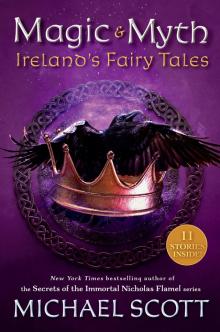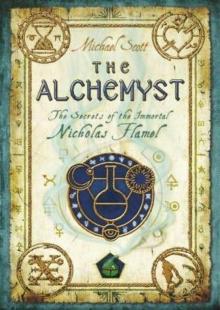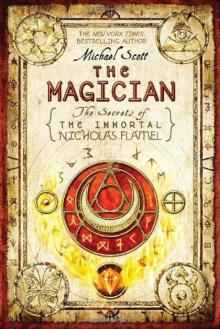- Home
- Michael Scott
Delphi Page 4
Delphi Read online
Page 4
All this means that we need to understand the Pythia at Delphi not as providing a “fortune-telling service,” but rather as a “sense-making mechanism” for the individuals, cities, and communities of ancient Greece. Or as Heraclitus said in the quote that opens this chapter, “the oracle neither conceals, nor reveals, but indicates.” Delphi was, as one businessman once remarked to me, something of an ancient management consultant. It was an adviser, albeit one with powerful authority.59 In a world that never seriously doubted the power and omnipresence of the gods, a complex and widespread system for consultation on what the gods had in store made perfect sense. Within that network of different levels and types of consultation, the Pythian priestess at Delphi had emerged, by the end of seventh century BC, preeminent, and would continue to be consulted right through until the fourth century AD. What a consultation at Delphi offered was a chance to air a difficult decision in fresh light, receive extra (divine-inspired) information and direction, which, while itself necessitating further discussion, brought with it powerful authority and thus a significant push toward consensus in regard to community decisions, and contentment that one was following the will of the gods in individual decisions. At the same time, the processes by which the Pythia was consulted—the form of the questions and the form of her responses—insulated the oracle at Delphi so that even Croesus’s exasperated attempts to show the oracle as having lied to him failed to dent its reputation. It gave Delphi a Teflon coating, a resistance to failure that, while challenged on particular occasions, would ensure that the oracle survived for over a millennium.
But, how, when, and why did it all begin? Just how did the city and sanctuary of Delphi, with its oracle at its center, emerge to such preeminence by the end of the seventh century BC? What can we know about the earliest development of this institution and its surrounding community that would come to be known as the center of the ancient world, and how did the ancients themselves seek to explain the importance and origins of Delphi and its oracle? These questions are the focus of the next two chapters.
“The names have strength, the shadows have authority.”
—George Daux, one of the early Delphic scholars
(quoted in Mulliez 2007, p. 156)
2
BEGINNINGS
How, when, why did it all begin?
At some time between the late seventh and mid-sixth century BC, the earliest origins of Delphi were explained in the form of the Homeric Hymn to Apollo. This hymn, which forms part of a larger collection of hymns—attributed at different times to the authorship of Homer, Hesiod, Cynatheus of Chios and, as a result normally left anonymous—praising the different Olympian gods, charts Apollo’s life from his birth on the island of Delos through to his search for a suitable place to set up his oracle:
And thence you went speeding swiftly to the mountain ridge, and came to Crisa beneath snowy Parnassus, a foothill turned towards the west: a cliff hangs over it from above, and a hollow, rugged glade runs under. There the lord Pheobus Apollo resolved to make his lovely temple, and thus he said “In this place I am minded to build a glorious temple to be an oracle for men, and here they will always bring perfect offerings, both they who dwell in rich Peloponnesus and the men of Europe and from all the wave-washed isles, coming to question me. And I will deliver to them all counsel that cannot fail, answering them in my rich temple.”1
Apollo’s journey did not take him directly from Delos to the Parnassian mountains. Before eventually settling upon Crisa, he had passed through, and rejected, a number of sites throughout Greece: the Lelantine plain in Euboea, Thebes, Onchestus, Telphusa, and the city of the Phlegyians. After finally arriving at Crisa and establishing the foundations for his temple—completed by the legendary architects Trophonius and Agamedes—Apollo, according to the Hymn, had to do battle with a monster living nearby:
But near by was a sweet flowing spring, and there with his strong bow the lord, the son of Zeus, killed the bloated great she-dragon, a fierce monster wont to do great mischief to men upon earth…. She was a very bloody plague.2
There, the Hymn continues (lines 356–73), the dragon, in agony, died under the onslaught of Apollo’s arrows. The mountainside was filled with an awful sound as she writhed this way and that, her life ebbing away as the blood flowed from her wounds. The power of the sun slowly rotted her body, and this, according to the Hymn, is why the place is now called Pytho instead of Crisa, and why “men call the lord Apollo by another name, Pythian; because on that spot the power of the sun made the monster rot away [the Greek verb to rot is puthein].”
The Homeric Hymn also sets out what happened next. Apollo turned his attention to selecting the priests to run his new temple. He spied a boat full of Cretan sailors, and, having turned himself into a dolphin (in Greek delphis), he enticed the boat to go off course and brought it to the port of Cirrha (modern-day Itea—see map 3; fig. 0.1) on the plain below Crisa/Pytho/Delphi (lines 388–450). At which point, he revealed himself and commanded them to beach their ship, build an altar, worship him as Apollo Delphinios, then follow him, singing in his honor, up to the site at Pytho (lines 450–512). But once there, seeing the rocky landscape that would hardly sustain their community, the Cretans cried out in dismay, asking the god how they could possibly survive in this barren land. Apollo replied that they would survive thanks to the unstinting generosity of all those who came to worship and consult his oracle. But, he continued, such a privileged position came with a price: if they ever committed the kind of hubris (“arrogant folly”) common among men, they would become servants to the rest of mankind for all time (lines 513–44).
A complex tale thus sets out the story of Delphi’s beginnings, but it does not provide answers to all our questions, in particular how the site Pytho eventually became known as Delphi. Yet, in reality, the picture is even more complicated than this. For the Homeric Hymn is not our only source for Delphi’s origins. Around the same time, another lyric poet, Alcaeus, whose work survives only in fragments, recounts a slightly different tale in which Apollo is ordered by Zeus to set up his oracle at Delphi, but instead flies to live with the Hyperboreans. A year later, Apollo is convinced by enterprising Delphians to come back to Delphi (always known as Delphi) and is encouraged to set up his oracle there.3 Gone is the serpent, gone is Pytho, gone are the Cretans, and Apollo appears not so much the savior of Delphi, but more a naughty schoolchild eventually persuaded to do what his father ordered him to do in the first place.
The story becomes much more complex in the fifth century BC. The great tragedian Aeschylus, in his famous trilogy Oresteia, recounts the gruesome workings of the fated house of Atreus ending eventually with Orestes who comes to Delphi seeking salvation for having murdered his mother (Clytemnestra, who had murdered his father Agamemnon, who had sacrificed their daughter Iphigeneia to get a fair wind to sail to Troy). In the final play, Eumenides (lines 1–19), the oracular priestess of Apollo herself tells the story of Delphi’s beginnings:
First, in this my prayer, I give the place of chief honour among the gods to the first prophet, Earth (Gaia), and after her to Themis; for she, as is told, took second this oracular seat of her mother. And third in succession, with Themis’ consent, and by constraint of none, another Titan, Phoebe, child of Earth, took her seat. She bestowed it, as birth-gift, upon Phoebus Apollo, who had his name from Phoebe…. With prophetic art, Zeus inspired his soul, and stabilised him upon this throne as fourth and present seer.
Aeschylus’s version not only offers a much longer history of the oracle at Delphi—stretching back to Gaia (also known as Ge), the “Mother Earth” goddess, and thus to the gods who ruled over the earth long before the Olympian deities (Zeus, Apollo, and the rest)—but also says nothing about Apollo having had to slay a she-dragon at the site.4 Instead the succession from Gaia to Themis to Phoebe to Apollo is a peaceful one. Later that same century, however, the famous tragedian Euripides, in his play Iphigenia at Tauris (lines 1234–58), offers yet another picture
:
From the spot famed for their birth [Delos], she [Apollo’s mother Leto] brought them [Apollo and his sister Artemis] to Mount Parnassus, mother of surging streams, whose slopes ring with revels of Dionysus. There the dragon with wine-red eyes, with body of bronze and coloured scales, as fierce a monster as land or sea can show, lay in the leafy laurel-shade guarding the ancient oracle of the Earth [Gaia]. Though you were still a little child, Phoebus Apollo … yet you killed the dragon, and became successor to the sacred oracle.
Euripides’ tale eliminates the peaceful transition and reintroduces the slaying of the dragon, who is now guardian of Gaia’s oracle. But Gaia does not take kindly, in Euripides’ version, to this coup, for she sends dreams that reveal the future into the minds of men, thus stealing the oracle’s preeminence. Apollo, in turn, complains to almighty Zeus, who, amused, favors Apollo and his oracle and stops the dreams. In yet another version of the story, by an unknown author and seemingly prevalent by this time, Apollo did not get off so easily for slaying the dragon, but was forced by Zeus to pay atonement by suffering nine years’ exile from Delphi, at Tempe in Thessaly (in remembrance of which, at least in the third through first centuries BC, there was a special festival practiced every nine years at Delphi).5
The plot thickens. But the Homeric Hymn, Alcaeus, Aeschylus, and Euripides are not the only ancient sources to offer versions of a Delphic beginning involving Gaia, Themis, Apollo, a serpent, and exile. For Ephorus, the fourth century BC historian, Themis and Apollo held the oracular site together.6 For an ancient scholiast of Pindar, the divine personification of Gaia is replaced with that of the Night.7 Simonides, the lyric poet, thought the dragon was male, not female.8 Another interpretation, this by the first century BC geographer Strabo, has the Corycian cave, eight hundred meters higher up the Parnassian mountains from Delphi (see map 3, figs. 0.2, 1.2), as the home of the serpent and the area of the first Delphic community.9 Others thought it was not a dragon that Apollo fought but a fearsome warrior, and not at Delphi, but at Panopeus.10 Pindar related that Gaia did not respond with dreams to Apollo’s usurpation of her oracle, but with a request that Apollo be sent to Tartarus.11 Pausanias said the Cretans argued that they had purified Apollo, and not the Thessalians at Tempe, after the murder of the dragon, and also that the Argives and Sicyonians claimed they had been responsible for Apollo’s purification.12
For the ancient Greeks there were thus various ways in which to answer the questions how, when, and why the oracle at Delphi began, as well as how the site became known as Delphi and why Apollo here was worshiped as Apollo Pythios. Nor do the different versions simply tinker with details. Some intimate that additional gods were involved—for instance, Poseidon who may have had a home at Delphi in association with Gaia long before Apollo, and who may have given Delphi to Apollo in exchange for a sanctuary at Tainaron in the modern-day Mani area of southern Greece.13 Other sources cite Dionysus not only as being involved at Delphi alongside Apollo, but in fact predating him.14 Later sources evoke a second prophetess, a Sibyl, perhaps a daughter of Poseidon, operating at Delphi before Apollo.15 Pliny and Pausanias report the involvement of Parnassus, the eponymous hero of the mountains, as well as Delphus, both sons of Poseidon, in the invention of divination.16 Other ancient stories go even further and offer us an entirely different set of stories about why Delphi became important and how it got its name. Some report that Delphi was discovered by Zeus as the center of the world after he let loose two eagles from opposite ends of the world and they met at Delphi.17 Others believed that Delphi’s name was derived from the Greek word for “hollow,” “cavern,” or even “womb,” evoking its place as the center of the earth.18
In fact, pretty much every detail of Delphi’s beginnings comes in different forms in the ancient literature. And nor is it only Delphi’s origins that thus vary. The ancient sources also offer multiple interpretations for the history, and meaning, of particular parts of the Delphic sanctuary. For some, the omphalos stone (see fig. 2.1), supposed to be housed (somewhere) inside the heart of the temple of Apollo, was the marker of the center of the earth (with images of Zeus’s eagles inscribed on either side of it). For others it was the stone Cronus was tricked by his wife Rhea into swallowing (instead of the baby Zeus) so as to protect Zeus from being eaten, and that Zeus later, after he had killed his father and achieved world sovereignty, set up as a sign of his power. For others still the omphalos was a symbol of the “voice” of the gods. For others it was the tomb of the serpent Pytho, or even of Dionysus.19 Moreover, the lineage of the temple of Apollo at Delphi itself was contested. Pausanias (10.5.9–13) insists on four consecutive temples—the first made of laurel, the second of birds’ feathers and beeswax, the third of bronze, and the fourth of stone—the last of which was burned down in 548 BC. Pindar’s fragmentary eighth Paean, in contrast, attributes the bronze temple to different builders, and disagrees with Pausanias over the manner of its disappearance (for Pindar, it was swallowed up by the ground after a lightning strike).20
With so many varying stories, how should we understand Delphi’s beginnings, let alone the stories about crucial elements of its later sanctuary (for instance, the temple and the omphalos) and the nature of the gods worshiped there? Earliest scholarship worked hard to sort the different myths, to weigh their authenticity and come up with a single, synergized, “credible” story of Delphi’s foundation. Later scholarship has sought, instead of trying to collapse the different versions, to understand the narrative roles of these stories in their respective literary genres. As well, broader comparisons with the myth cycles of other ancient cultures have been undertaken in order to see whether different myths from different cultures at different times have influenced the Greek tradition.21
Figure 2.1. A Hellenistic/Roman version of the omphalos stone found at Delphi (Museum at Delphi).
What all these later approaches prompt us to keep in mind is the date of the sources themselves. The earliest, the Homeric Hymn, sits somewhere in the late seventh to mid-sixth century BC, the latest at the very tale end of the ancient world. None of them are contemporary with Delphi’s origins, nor, of course, would we expect them to be. But as a result, we need to understand that these different tales of Delphic beginnings tell us little about the reality of Delphic origins, and, rather, about how different eras, authors, and places in the ancient world sought, or rather chose, to perceive those beginnings. In response, our question has to change. Not how, when, why did Delphi begin, but how and why did Greek society, at a time when Delphi was already a successful and key part of their world, seek to explain its origins, development, and the nature of the gods worshiped there?
One of the key tenets of the story in the Homeric Hymn is how the geographical range of Apollo’s journey links him, and thus Delphi, to a wide range of places covering a vast swathe of the ancient world, that same ancient world to which, by the time of the Hymn’s first known appearance (seventh–sixth century BC), Delphi was becoming increasingly central (see maps 1, 2). The Hymn thus portrays Apollo as forecasting what has now, demonstrably, come true.22 But the Hymn also delves into Delphi’s curious geographical position, which is, after all, precarious in the way it clings to the mountain slopes of Parnassus. As the Cretan sailors point out to Apollo, it is not an obvious choice for the founding of a community. Apollo’s rejection of the many sites he examines prior to Delphi cites three requirements for his oracular site: tranquillity, accessibility, and poverty of natural resources. Apollo’s priority list in the Homeric Hymn thus acts to justify the particularity of Delphi’s position, and, by assuring the Cretan sailors that they would always be provided for, reaffirms the gods’ will for the continuing success of Delphi as a place to which the world will come.23 It has further been suggested that the foundation of Delphi by Apollo as laid out in the Homeric Hymn also mirrors one of the activities Delphi was (seen to be) heavily involved in during the late eighth–sixth centuries BC: colonization. Its foundation story thus becomes a reflection of
the oracle’s contemporary role in the Greek world.24
The emergence of myths that push the origins of Delphi much farther back, to the time of the pre-Olympian gods, and make the succession a fraught one, has been associated with the development in Greek thought of a clearer genealogy of the divine (following Hesiod’s Theogony), and subsequently of that genealogy describing a move from darker primordial forces toward a more civilized order, which Apollo’s battle with the serpent comes to represent.25 In so doing, at a time when Delphi’s position in Greek society has come, as we shall see in later chapters, to be associated with the establishment of law, order, and good relations between human and divine, the myths surrounding its origins come to mold that role as one for which Delphi was predestined and has been performing since its inception; indeed the very act of its inception enabled Apollo to establish order over chaos. Similarly, the myths surrounding the lineage of Apollo’s temple (built of laurel, then of beeswax, then of bronze by gods, then of stone by heroes, and finally by men) have been argued to articulate a continuing transition from the work of Nature, to that of the gods, of the heroes, and then of man, underscoring both Delphi’s key position in the traditional framework of the mythic history of the Greek world’s development, and also, as a result, justifying Delphi’s later central role in the ancient Greek world.26
At the same time, the emergence of stories that prioritize the longevity of Delphi and the tendency for there to be conflict over its ownership have also been argued to reflect the fact that Delphi was the subject of numerous conflicts during its archaic, classical, and Hellenistic existence. Conflict about the origins of Delphi and about the violent seizure of its sanctuary by Apollo mirror a series of fights for Delphi both in myth and history over its ancient lifetime, as it came time and time again to be the subject of hostile takeover.27 Equally, the importance of longevity and conflict in Delphi’s origins has been attributed to the developing competition for authority between different oracular sites in the ancient Greek world during the archaic and classical periods.28 The emergence and dominance of origin myths, which push Delphi’s origins back to the gods before Zeus and the Olympians, like Gaia, could be seen as part of the later propaganda game between oracular sanctuaries competing for business through a stress on longevity and thus importance.29 Pausanias (5.25.13), in the second century AD, informs us that Delphi was not the only oracle to play this game; the oracle of Zeus at Olympia also claimed descent from Gaia.

 The Warlock
The Warlock The Necromancer
The Necromancer Tom Cringle's Log
Tom Cringle's Log Delphi
Delphi The Magician
The Magician La mort de Jeanne d'Arc (trad. privee)
La mort de Jeanne d'Arc (trad. privee) Magic and Myth
Magic and Myth The Death of Joan of Arc
The Death of Joan of Arc Saint Patrick
Saint Patrick Aoife and Scathach, Shadow Twins
Aoife and Scathach, Shadow Twins Machiavelli
Machiavelli The Ballad of Black Hawk and Billy the Kid
The Ballad of Black Hawk and Billy the Kid The Sorceress
The Sorceress Nicholas and the Krampus
Nicholas and the Krampus The King of the Birds
The King of the Birds Nicholas Flamel 1 - The Alchemyst sotinf-1
Nicholas Flamel 1 - The Alchemyst sotinf-1 Shakespeare- a Complete Introduction
Shakespeare- a Complete Introduction 06 The Enchantress
06 The Enchantress 05 The Warlock
05 The Warlock The Nameless City
The Nameless City The Necromancer sotinf-4
The Necromancer sotinf-4 Mirror Image
Mirror Image Nicholas Flamel 2 - The Magician sotinf-2
Nicholas Flamel 2 - The Magician sotinf-2 The Sorceress sotinf-3
The Sorceress sotinf-3